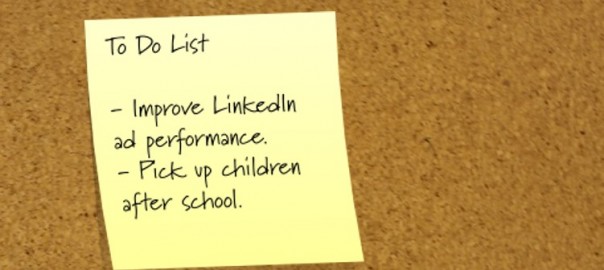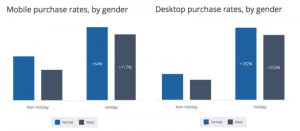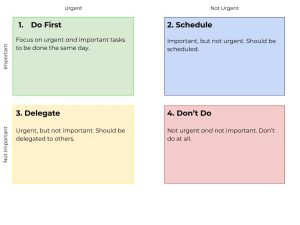
LinkedIn is today’s B2B media powerhouse. If you are a B2B marketer, in nearly any sector, chances are you are paying attention to LinkedIn, as well you should. LinkedIn brings three things that make it stand out from other B2B media companies.
- Scale. According to comScore’s July 2015 rankings, LinkedIn is the 15th largest media property in the US. That makes it larger than consumer staples like Weather.com, Conde Nast and BuzzFeed. Chances are, a portion of your business audience uses LinkedIn regularly.
- Data. We directly contribute and maintain our own data on LinkedIn, making it one of the most accurate sources of data for B2B marketers.
- Content Distribution. With Sponsored Updates, LinkedIn’s native ad format, LinkedIn has an offering that is tailored to distributing your content.
So how do you take advantage of it? Here are five things that, in my experience, will make a big difference in the performance of your LinkedIn Sponsored Update campaign.
1. Nail your targeting
With all the data LinkedIn has available, this part should be easy. Unfortunately, it isn’t. Nailing this requires some approaches that can be counterintuitive.
- Keep your targeting lists short. Instead of building an exhaustive targeting list, such as every group your audience might use (and watering down your targeting significantly in the process), use LinkedIn’s audience expansion feature instead.
- Use Skills targeting. Skills targeting provides far more granularity than traditional role or functional targeting. With traditional role-based targeting, you would target marketers in order to reach someone like me. But with skills targeting, you can target people involved in specific areas within marketing, such as B2B Marketing, Demand Generation or Account Based Marketing. Skill and group targeting are consistently the top performing approaches, but skill targeting almost always is able to provide more volume with similar cost efficiency.
- Use negatives. In LinkedIn, not every data point is populated in every profile. Actually, lots of data is missing. Instead of adding new targeting requirements, consider excluding segments you don’t want to reach, such as smaller companies and entry-level staff.
Straight role-based targeting (such as targeting senior IT) almost always costs more, because you likely have more competition, and doesn’t perform as well as more specific targeting criteria like skills or group membership.
2. Expect mobile
It is 2015. Mobile overtook desktop in time spent more than a year ago. According to LinkedIn, 70% of clicks in the main stream are from mobile devices.
Today, social advertising IS mobile advertising, yet it seems many marketers haven’t accepted this reality yet. Just two weeks ago, I stumbled across a company promoting new research and insights on about mobile marketing and today’s mobile consumer. Turns out it was a PDF, possibly the worst format you could choose for a mobile audience. I eventually gave up trying to read it on my phone. And no, I didn’t take the time to save it so I could read it later at my desk. Stop expecting people to work that way.
3. Give people a personal reason to care
B2B marketers love to position the business value of their content and their solution. How to reduce costs, improve profitability, drive growth, etc. But unless you are marketing directly to owners, these aren’t primary motivators. Seth Godin outlined a hierarchy of the needs or motivators of B2B buyers which bears repeating. Here they are, in order:
- Avoiding risk
- Avoiding hassle
- Gaining praise
- Gaining power
- Having fun
- Making a profit
Your ad and offer need to focus on the top of this list, not the bottom.
One of the best converting offers I’ve worked with was a piece of content promoted with the line “we’ve read all the books so you don’t have to.” We didn’t promise profits, growth, or business efficiency, even though that is the space we were working in. Instead, we promised to take the hassle out of getting the information people needed. And it worked extremely well.
4. Hack your social proof
Social proof, particularly in the form of positive comments, matters on LinkedIn. Not only do positive comments help to validate your offer, they also give your ad more real estate in the LinkedIn stream.
But don’t wait around for positive comments. Reach out and get people to comment. Or comment yourself if you must! Not only will it provide social proof, it also kickstarts a virtuous cycle on LinkedIn. Because of the engagement, your ad is favored by LinkedIn. Because of the comments, it captures more attention and more engagement. And then LinkedIn favors your ad even more.
I’ve seen this cycle in practice multiple times: an ad with initial positive comments significantly outperforms the rest of the campaign, yet the exact same ad in another campaign without the comments is a yawn. The difference is social proof.
5. Track and optimize
One of the shortcomings of LinkedIn is that it doesn’t yet support conversion tracking. Making it worse, until recently, posting your content with a tracking link from your advertising or social management platform would actually mask your URL, making it unclear where the link was taking you.
Fortunately, LinkedIn now supports the use of your social or advertising tracking links. So use them! The results will almost always take you down a different optimization path than what you would do purely focusing on the metrics available through LinkedIn.
LinkedIn ads – What works for you?
What has been your biggest frustration with LinkedIn Sponsored Updates, or what tip or trick has worked well for you? I’d love to hear about it in the comments below!
Digital & Social Articles on Business 2 Community(139)
Report Post





